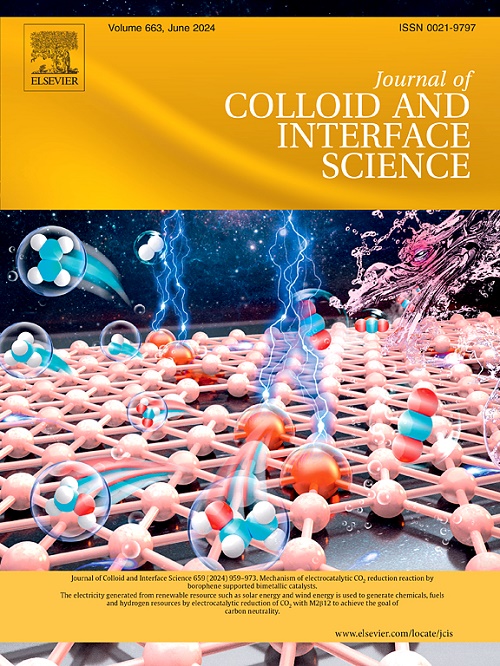Dual-metal heterogeneous electrode enabling efficient co-electrosynthesis of adipic acid and hydrogen
IF 9.4
1区 化学
Q1 CHEMISTRY, PHYSICAL
引用次数: 0
Abstract
The electrochemical oxidation of cyclohexanone to produce adipic acid (AA), coupled with hydrogen (H2) production, represents a promising strategy. However, the development of low-cost and high-performance electrodes remains a significant challenge. Herein, we present Ni@Cu dual-metal heterogeneous material as a proof of concept, demonstrating its potential for efficient co-electrosynthesis of adipic acid and H2. The Ni@Cu material, featuring abundant heterogeneous interfaces, is grown on copper foam (CF) through a straightforward electrochemical reconstitution strategy. This approach enhances the exposure of catalytic active sites, improves interfacial charge transfer, and accelerates reaction kinetics during electrolysis. As a result, the Ni@Cu/CF electrode achieves low potentials of −172 mV vs. RHE and 1.55 V vs. RHE at 100 mA cm−2 for the hydrogen evolution reaction (HER) and cyclohexanone oxidation reaction (COR), respectively. The assembled HER||COR electrolyzer delivers a high adipic acid yield (1.15 mmol h−1 at 250 mA cm−2) and a maximum Faradaic efficiency (FE) of 88 % at 100 mA cm−2. It also achieves a high FE for H2 (over 96 % at 250 mA cm−2) and demonstrates excellent co-electrolysis stability for over 100 h. In-situ spectroscopy confirms that the formation of heterogeneous Ni@Cu facilitates the generation of active species and accelerates their kinetic transformation into adipic acid.

求助全文
约1分钟内获得全文
求助全文
来源期刊
CiteScore
16.10
自引率
7.10%
发文量
2568
审稿时长
2 months
期刊介绍:
The Journal of Colloid and Interface Science publishes original research findings on the fundamental principles of colloid and interface science, as well as innovative applications in various fields. The criteria for publication include impact, quality, novelty, and originality.
Emphasis:
The journal emphasizes fundamental scientific innovation within the following categories:
A.Colloidal Materials and Nanomaterials
B.Soft Colloidal and Self-Assembly Systems
C.Adsorption, Catalysis, and Electrochemistry
D.Interfacial Processes, Capillarity, and Wetting
E.Biomaterials and Nanomedicine
F.Energy Conversion and Storage, and Environmental Technologies

 求助内容:
求助内容: 应助结果提醒方式:
应助结果提醒方式:


